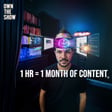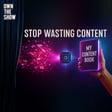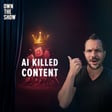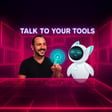
Marketing Automation Meets AI: Put Your Marketing On Autopilot w/Audra Carpenter
In this episode of the AI-Driven Marketer, Dan Sanchez talks to Audra Carpenter, an agency owner and digital marketing expert, about harnessing the power of AI to drive revenue and optimize workflows. They delve into the intricacies of automating content creation, integrating AI tools like Open Router and Make, and the challenges of staying current with evolving AI models. Audra shares her insights on the future of AI in marketing, the necessity of embracing automation to stay competitive, and practical tips for maximizing the impact of podcast content. Tune in to discover how AI can revolutionize your marketing strategies and streamline your processes.
Timestamps:
00:00 Nostalgic about missed opportunities in digital marketing.
05:25 Published 50 AI courses in speedy manner.
09:15 Case studies inspire automation and delegation.
10:07 Utilized social media to advance career.
13:52 Technology pivotal, automation increasing, oversight essential.
18:57 Posting challenges lead to app development.
19:50 Utilize RSS feed for efficient cross-platform content sharing.
22:55 Need affordable image automation tool for mass emails.
28:37 Revisiting make for customization challenges, but still necessary.
31:39 Editing process involves cutting, captioning, and organizing.
33:12 Struggling to streamline podcast process and distribution.
37:34 Check out Zencastr, smooth with clipping tool.
42:13 Automating follow-up process for recorded episodes.
43:56 Efficient for non-collaborative tasks, handling complex sequences.
46:26 Assistants enhance prompts for consistent, detailed responses.
50:39 Automates integration with Make for $30.
55:38 Keep up with AI, focus on revenue.
56:18 Embrace AI to stay competitive and succeed.




![What’s Your Authority Score? [The 5-Factor Test] image](https://media.zencastr.com/cdn-cgi/image/width=112,quality=85/image-files/630c9f06819f8b3dba5fa460/cfbaccba-f587-45de-a41f-e2c99c15e2a5.png)
![The Audience Growth Engine [Full Framework] image](https://media.zencastr.com/cdn-cgi/image/width=112,quality=85/image-files/630c9f06819f8b3dba5fa460/46b84fd1-e856-4687-9aee-6b4a7e0bc7ff.png)


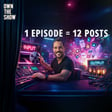
![The "Dream 100" Execution Plan [Google Sheet System] image](https://media.zencastr.com/cdn-cgi/image/width=112,quality=85/image-files/630c9f06819f8b3dba5fa460/fcd89374-76a4-4e58-a2e3-2bb7ddda4364.png)
